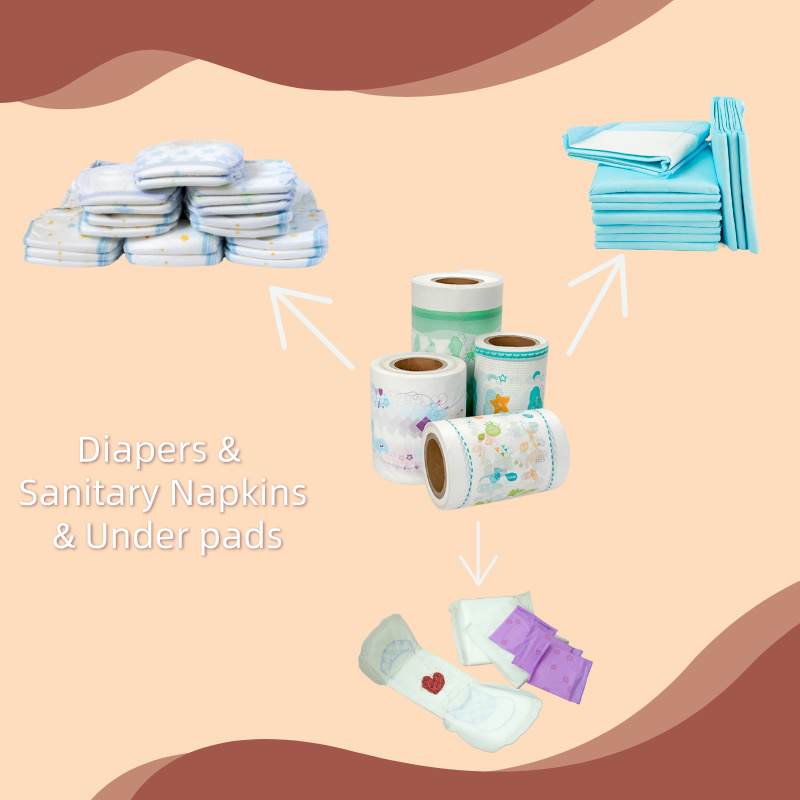In the manufacturing process of products such as diapers, sanitary napkins and under pads, the PE backsheet film plays an important role. Among them, PE backsheet film is a commonly used material. This blog will introduce the definition and characteristics of PE backsheet film and the key points of selecting breathable and non-breathable backsheet films.
PE backsheet film is a waterproof plastic film widely used in hygiene products like diapers, sanitary pads, and under pads. Known for its flexibility, durability, and moisture resistance, PE films serve as the outer layer to prevent leaks while offering structural support.
Key Features of PE Backsheet Films
**Waterproof: Blocks liquid penetration for dryness.
**Durable: Resists tearing and friction.
**Skin-friendly: Soft texture enhances comfort.
**Customizable: Compatible with heat-sealing, printing, and embossing.

Breathable vs. Non-Breathable PE Backsheet Film
1. Breathable PE Backsheet Film
· Allow air/moisture vapor to escape through microporous technology.· Pros: Reduces skin irritation, ideal for extended wear (e.g., premium diapers).
· Cons: Slightly higher cost.
2. Non-Breathable PE Backsheet Film
· Fully waterproof with no airflow.· Pros: Superior leak protection, cost-effective for budget products.
· Cons: May trap heat/moisture.
Choosing the Right Backsheet Film
· Product Use: Prioritize breathability for overnight or sensitive-skin products; opt for non-breathable films for short-term or high-absorption needs.· Climate: Humid regions benefit from breathable films.
· Regulations: Some markets require breathability for infant care.
Why Choose NISO ?
1.Range: Economical PE films to premium breathable options.2.Quality: ISO-certified manufacturing and leak-testing.
3.Support: Expert guidance to balance performance and cost.
PE backsheet films are vital for hygiene product performance. Whether prioritizing breathability or leak-proofing, selecting the right film ensures comfort, safety, and reliability.